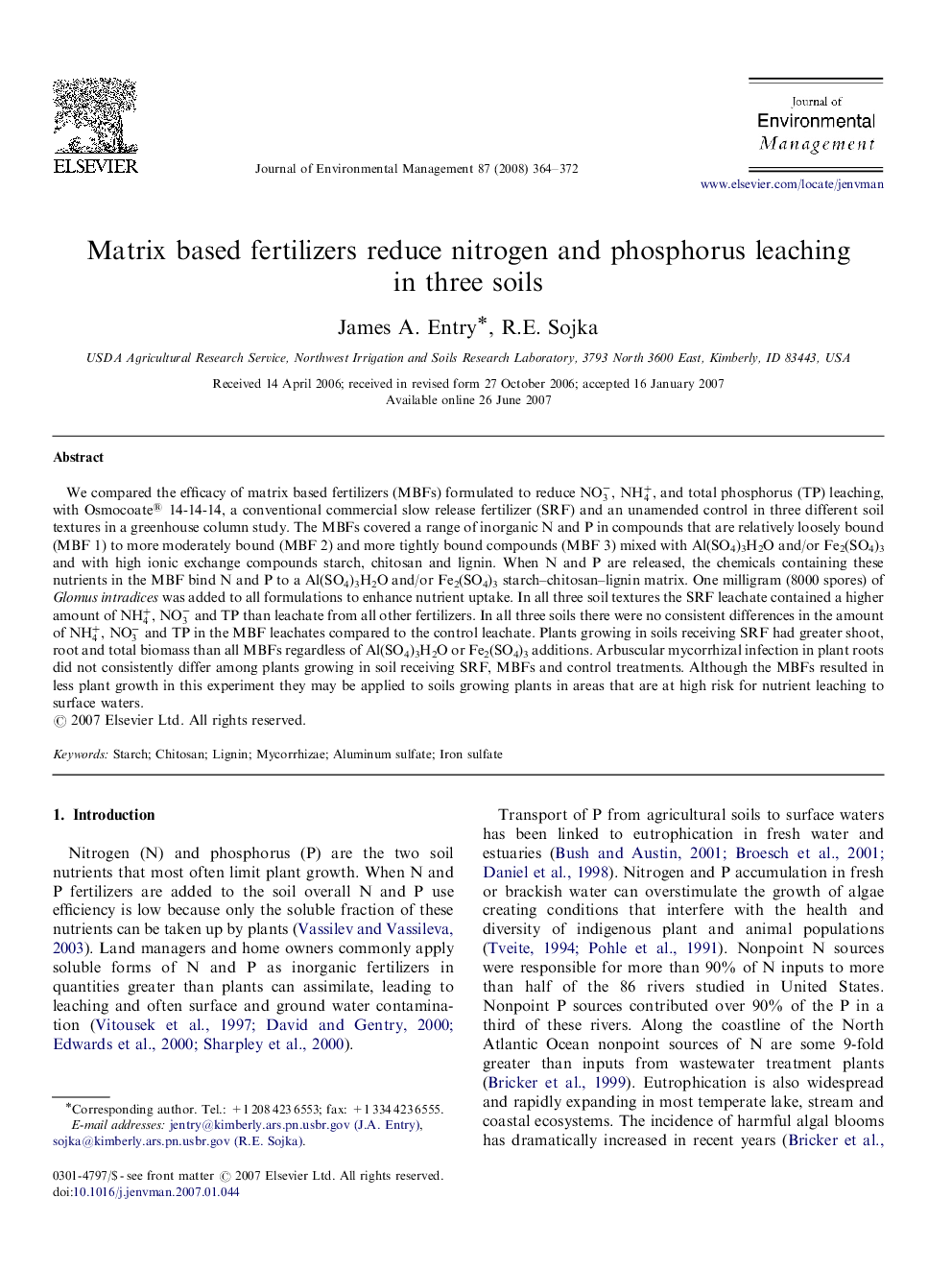| Article ID | Journal | Published Year | Pages | File Type |
|---|---|---|---|---|
| 1057596 | Journal of Environmental Management | 2008 | 9 Pages |
We compared the efficacy of matrix based fertilizers (MBFs) formulated to reduce NO3-, NH4+, and total phosphorus (TP) leaching, with Osmocoate®® 14-14-14, a conventional commercial slow release fertilizer (SRF) and an unamended control in three different soil textures in a greenhouse column study. The MBFs covered a range of inorganic N and P in compounds that are relatively loosely bound (MBF 1) to more moderately bound (MBF 2) and more tightly bound compounds (MBF 3) mixed with Al(SO4)3H2O and/or Fe2(SO4)3 and with high ionic exchange compounds starch, chitosan and lignin. When N and P are released, the chemicals containing these nutrients in the MBF bind N and P to a Al(SO4)3H2O and/or Fe2(SO4)3 starch–chitosan–lignin matrix. One milligram (8000 spores) of Glomus intradices was added to all formulations to enhance nutrient uptake. In all three soil textures the SRF leachate contained a higher amount of NH4+, NO3- and TP than leachate from all other fertilizers. In all three soils there were no consistent differences in the amount of NH4+, NO3- and TP in the MBF leachates compared to the control leachate. Plants growing in soils receiving SRF had greater shoot, root and total biomass than all MBFs regardless of Al(SO4)3H2O or Fe2(SO4)3 additions. Arbuscular mycorrhizal infection in plant roots did not consistently differ among plants growing in soil receiving SRF, MBFs and control treatments. Although the MBFs resulted in less plant growth in this experiment they may be applied to soils growing plants in areas that are at high risk for nutrient leaching to surface waters.
